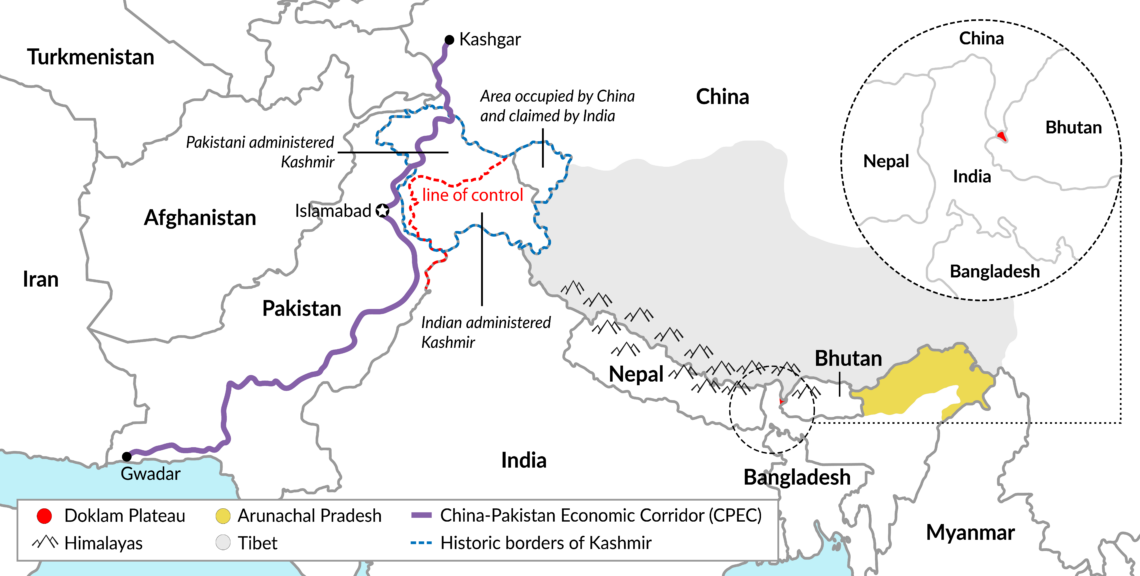Potential conflict between Asian giants
The mountainous border between India, China, and Pakistan is a dangerously underestimated trouble spot that could wreak havoc between Asia’s two emerging superpowers.

In early February, as India’s parliamentary election campaign heated up, Prime Minister Narendra Modi visited the northeastern province of Arunachal Pradesh. This region is one of several areas along the Himalayas that are disputed between India and China. Mr. Modi’s visit to Chinese-claimed territory was bitterly criticized in Beijing.
It was just one more sign of strain in the manifold, dangerous relationship between Asia’s two largest countries – both emerging superpowers.
The mountainous northern territories are regularly the site of military incidents along the long border with China. Only two years ago, there was a standoff in which China violated Bhutan’s territory to build a military supply road toward the Indian border.
It is also strategically critical for India to contain Chinese influence in Nepal and Bhutan, the small sovereign states sandwiched between the two giants. Bringing either under Chinese sway would give Beijing a valuable bridgehead south of the Himalayas.
Continuing concerns
In January, India’s parliament discussed relations with its rival to the north. A major concern is the Belt and Road Initiative (BRI), which New Delhi perceives as a threat. Two features of this project stand out. First, host countries that “benefit” from the BRI – through the construction of overland transport or port facilities – become increasingly indebted and financially dependent on China. Their ranks already include most of the Indian Ocean countries and states bordering India.
The second feature is the China-Pakistan Economic Corridor (CPEC), probably the most important part of the BRI. This rail and highway connection links China’s remote western areas to the port of Gwadar on the Arabian Sea, along the main sea route to Europe, Africa and the Middle East.
Tensions between India and China are not likely to be resolved by trade.
The CPEC crosses the Pakistani-controlled part of Kashmir, which is also claimed by India. Formally, India considers Pakistani administration of this territory as a violation of its sovereignty. New Delhi’s real and deepening worry, however, is China’s increasing influence over Pakistan.
Indo-Pakistani relations are strained, to say the least, and the countries have fought several wars since they gained independence in 1947. The Kashmir dispute has been a constant ever since, but it was the original partition of mainly Islamic Pakistan and Hindu India at the moment of independence – involving massive population resettlements – that created a deep and lasting animosity. India has accused Pakistan of tolerating and even sponsoring terrorist attacks, while Prime Minister Modi’s strong Hindu nationalist politics have also not helped the relationship.
Dangerous situation
Tensions between India and China are not likely to be resolved by trade. Commerce between the two countries is relatively small, reaching a total value of some $80 billion in 2017. New Delhi complains that Indian exports have been hampered by protectionist regulations in China.
An Indian parliamentary study concluded that between Asia’s three great powers, New Delhi has managed to cement excellent relations with Japan, but not with its much closer and more powerful neighbor, China.
This is a dangerous situation. It contains the possibility of a military conflict, either directly through a confrontation between India and China, or indirectly via border incidents with Pakistan, a Chinese ally. An additional, sobering risk is that all three countries are nuclear powers.
